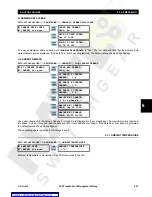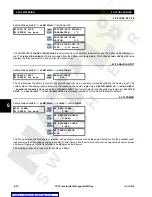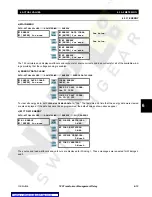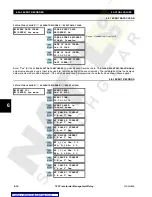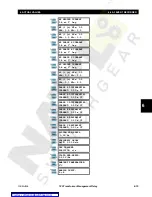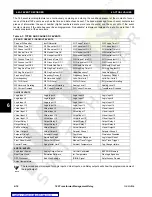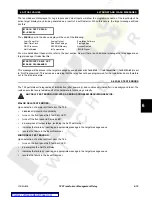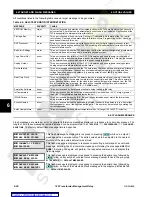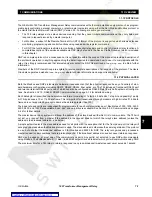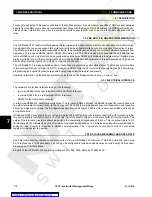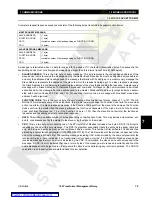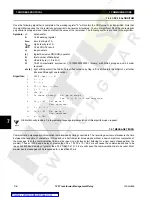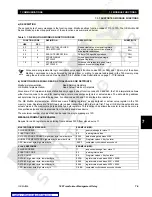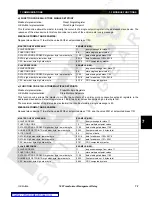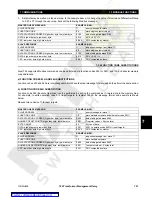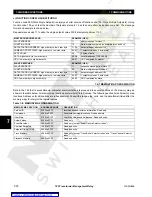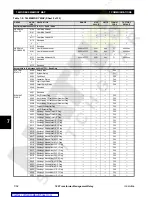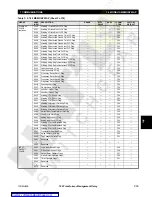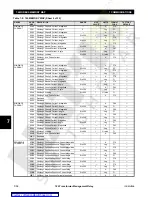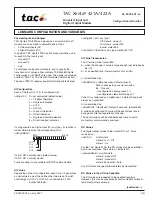
7-2
745 Transformer Management Relay
GE Multilin
7.2 MODBUS PROTOCOL
7 COMMUNICATIONS
7
7.2MODBUS PROTOCOL
7.2.1 DESCRIPTION
This section dedicated to discussion of details of the Modbus protocol. As noted above, specifics of DNP are best obtained
directly from the DNP Users Group at
www.dnp.org
. Along with the Device Profile Document, the DNP specification pro-
vides sufficient information for a user to develop an interface should DNP wish to be used for communications with the
relay.
7.2.2 GE MULTILIN MODBUS IMPLEMENTATION
The GE Multilin 745 Transformer Management Relay implements a subset of the AEG Modicon Modbus serial communica-
tion standard. Many devices support this protocol directly with a suitable interface card, allowing direct connection of relays.
The Modbus protocol is hardware-independent; that is, the physical layer can be any of a variety of standard hardware con-
figurations. This includes RS232, RS422, RS485, fibre optics, etc. The 745 includes a front panel RS232 port and two rear
terminal RS485 ports, one of which can be configured as a four-wire RS422 port. Modbus is a single master / multiple slave
protocol suitable for a multi-drop configuration as provided by RS485/RS422 hardware. In this configuration up to 32 slaves
can be daisy-chained together on a single communication channel.
The GE Multilin 745 is always a Modbus slave. It cannot be programmed as a Modbus master. The Modbus protocol exists
in two versions: Remote Terminal Unit (RTU, binary) and ASCII. Only the RTU version is supported by the 745. Monitoring,
programming and control functions are possible using read and write register commands.
Additional information on the Modbus protocol can be found on the Modbus website at
www.modbus.org
.
7.2.3 ELECTRICAL INTERFACE
The hardware or electrical interface is any of the following:
•
two-wire RS485 for the rear terminal COM1 and COM2 terminals
•
four-wire RS422 for the rear terminal COM1 terminals
•
RS232 for the front panel connector
In a two-wire RS485 link, data flow is bidirectional. The four-wire RS422 port uses the RS485 terminal for receive lines, and
two other terminals for transmit lines. In the front panel RS232 link there are separate lines for transmission and reception
as well as a signal ground wire. In all configurations data flow is half duplex. That is, data is never transmitted and received
at the same time.
RS485 and RS422 lines should be connected in a daisy chain configuration (avoid star connections) with terminating resis-
tors and capacitors installed at each end of the link, i.e. at the master end and at the slave farthest from the master. The
value of the terminating resistors should be equal to the characteristic impedance of the line. This is approximately 120
Ω
for standard 24 AWG twisted pair wire. The value of the capacitors should be 1 nF. Shielded wire should always be used to
minimize noise. Polarity is important in RS485 communications. The '+' terminal of every device must be connected
together for the system to operate.
7.2.4 DATA FRAME FORMAT AND DATA RATE
One data frame of an asynchronous transmission to or from a GE Multilin 745 consists of 1 start bit, 8 data bits, and 1 stop
bit. This produces a 10 bit data frame. The 745 can be configured to include an additional even or odd parity bit if required,
producing an 11 bit data frame.
All ports of the GE Multilin 745 support operation at 300, 1200, 2400, 9600, and 19200 baud.


